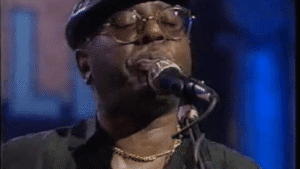Curtis Lee Mayfield was born on June 3, 1942, in Chicago, Illinois. Raised in the Cabrini-Green housing project, he absorbed gospel music from his church, where his grandmother taught him piano. That spiritual foundation shaped his lyricism and melodic sensibility, fueling a career that blended social commentary with sophisticated soul, funk, and R&B. Mayfield’s career spanned two towering phases—his work with The Impressions and his solo output—each marked by a commitment to social justice, musical elegance, and rhythmic innovation.
Early Influences
Mayfield’s early musical world was steeped in gospel, doo-wop, and the spiritual uplift of church music. His exposure to the piano and vocal harmony shaped his melodic instincts, while his self-taught guitar journey led him to develop alternate tunings that unlocked new rhythmic possibilities. He drew inspiration from Sam Cooke’s vocal clarity and the rhythmic pulse of Latin and African-American street music, forging a style that was both intimate and expansive.
Career Milestones
The Impressions: Gospel Uplift Meets Civil Rights
As a founding member and primary songwriter for The Impressions (1958–1970), Mayfield delivered anthems of hope and resistance like “People Get Ready,” “Keep on Pushing,” and “Choice of Colors.” His gospel-infused songwriting and shimmering rhythm guitar became the sonic signature of the Civil Rights movement.
Solo Breakthrough: Funk, Film, and Political Fire
In 1970, Mayfield launched his solo career and founded Curtom Records. His 1972 soundtrack for Superfly—featuring “Pusherman” and “Freddie’s Dead”—set a new standard for socially conscious film scores. The album fused funk grooves with political urgency, showcasing his depth as a composer, arranger, and cultural commentator.
Resilience & Final Works
After a tragic stage accident in 1990 left him paralyzed, Mayfield continued to record, singing while lying on his back for his final album, New World Order (1996). His perseverance and artistry in the face of adversity earned him deep respect across generations. He was inducted into the Rock and Roll Hall of Fame twice—once with The Impressions, and once as a solo artist.
Playing Style & Technique
Mayfield’s guitar style was built on syncopation, alternate tunings, and percussive phrasing. He pioneered the “Black Key Tuning” (F♯–A♯–C♯–F♯–A♯–F♯), inspired by the black keys of the piano, which unlocked shimmering inverted chord voicings and delicate rhythmic patterns. His guitar rarely took the lead; instead, it floated above the groove like a second percussion section—adding pulse, texture, and emotional lift. He prioritized rhythm over soloing, creating a glittering counterpoint to bass and drums. His touch was light, his phrasing conversational, and his guitar always served the song.
Signature Gear & Tone
Mayfield favored Fender guitars, especially Stratocasters, typically played with bright, clean amp settings. His tone emphasized clarity and rhythmic articulation, achieved with minimal effects. He relied on touch, tuning, and phrasing—not pedals—to create his signature sound. His gear choices reflected his philosophy: let the arrangement and emotion do the work.
Legacy
Curtis Mayfield elevated rhythm guitar to a starring role in popular music. His blend of artistic innovation and social relevance reshaped soul, funk, and protest music, influencing genres from disco to hip-hop. He proved that music could educate, uplift, and groove—all at once. His guitar style became foundational for funk and soul players, and his lyrical voice remains one of the most dignified and powerful in American music.
Final Reflection
Mayfield’s greatest contribution lies in his ability to translate the pain and promise of his community directly into music. His commitment to using art as a tool for dialogue is best summed up by his own words:
“Our purpose is to educate as well as to entertain. Painless preaching is as good a term as any for what we do.” — Curtis Mayfield
Essential Listening
To get a feel for Curtis Mayfield’s sound and message, dive into these key tracks. They show how his guitar style and songwriting worked hand in hand to move people.
Live Performances
Dive into Curtis Mayfield's essential rhythm work on "People Get Ready." This performance showcases his signature "Mayfield Chop," a unique, syncopated style that defined soul...
Dive into Curtis Mayfield's essential rhythm work on "People Get Ready." This performance showcases his...
A somber, soulful deep-cut from 1975, "Billy Jack" showcases Curtis Mayfield's intricate rhythmic guitar work and iconic falsetto, turning urban tragedy into a timeless soul...
A somber, soulful deep-cut from 1975, "Billy Jack" showcases Curtis Mayfield's intricate rhythmic guitar work...
Studio Recordings
This explosive anthem is a masterclass in progressive soul. Built on Mayfield's unique syncopated rhythm, it features a stunning, six-minute instrumental jam that remains one...
This explosive anthem is a masterclass in progressive soul. Built on Mayfield's unique syncopated rhythm,...



